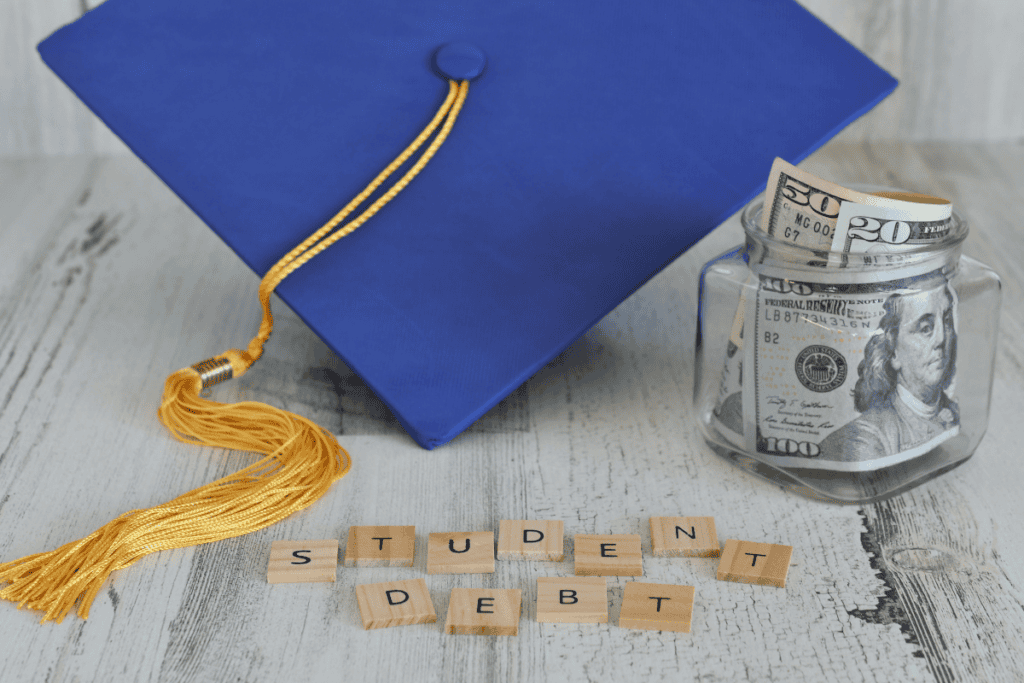It’s a great feeling: walking across the stage and getting your diploma, with a handshake from the dean or maybe even your college president. The long hours in the library, the classroom, and the lab have paid off, and you finally have your degree. Maybe you’ve even got your first job nailed down.
But for many recent graduates and those nearing the end of their academic journey, the reality of student loan payments hovers in the future. You may still be in the grace period, before you have to start making payments, but you know that debt is out there, waiting to claim a chunk of your monthly earnings. In fact, the average balance of student debt at mid-year 2024 was just under $38,000 per borrower.
Make no mistake—debt incurred to secure a college degree or even technical training should be considered as an investment in your future. To be competitive in the job market, you need the credibility, skills, and training that can only be obtained through the right kind of education. But the fact still remains that your student loans constitute a debt that must be repaid.
Fortunately, there are some things to know and to do that can make student loan repayment, if not easier, at least less mysterious and threatening.
- Federal loans are still your best option. First, it’s important to understand exactly what type of loan (or loans) you have. While educational loans are also offered by private lenders, it is almost always in your interest to utilize the federal student loan program. As opposed to private student lenders, federal programs typically feature lower interest rates, offer more liberal repayment terms, and do not require rigorous credit history or co-signers. They also typically feature hardship repayment options, in the event of unemployment or underemployment (about which more below). For federal direct undergraduate loans disbursed between July 1, 2024 and July 1, 2025, the fixed interest rate is 6.53%. While the recent rate cut by the Fed will not affect this rate, it is possible that rates for loans disbursed in the 2025 academic year could be slightly lower.
- Build your debt into your budget. Because your student loans are likely to be one of the most significant monthly obligations you’ll have as you begin your career, be sure to include the required payments for all your education debt in your “payables” column. If you’re like most graduates, you took several loans during your time at school, so make sure you’re clear on the total monthly amount you’ll need to keep current on your payments.
- Know your grace periods. Typically, education loans allow a certain period of time after you finish school before you need to begin paying. This grace period may be different for each loan you obtained.
- Alternative repayment plans on federal loans. One of the benefits of using the federal student loan program is the choices it gives you for repayment.
- Graduated repayment: Allows you to make lower payments at the beginning, and gradually increases the amount over a ten-year period. This is a good option for those who are reasonably assured of getting regular raises, bonuses, or other income boosts.
- Extended repayment: Allows you to stretch your payments over a longer period of time, resulting in lower monthly payments (but more interest paid over the life of the loan).
- Income-contingent repayment (ICR): Limits payment to no more than 20% of your adjusted gross income (AGI) for up to 25 years. At the end of this term, any remaining balance is forgiven.
- Pay As You Earn (PAYE): For those who can prove financial hardship, this plan limits payments to no more than 10% of your monthly income for up to 20 years. If you’re able to qualify, you may be able to keep the plan, even if you no longer have the hardship.
NOTE: While President Biden’s plan to forgive student debt has canceled out debt for some five million borrowers, future efforts remain in doubt at this time.
- Develop a payoff plan. Though a debt payoff plan can be used for any kind of debt, it can also be a great way to start making a dent in your education loans. The idea is to pick a loan—ideally, the one with the highest interest rate—and budget for making a payment larger than the monthly required minimum on that loan, while maintaining minimum payments on your other debt. By paying “extra,” you’ll liquidate the high-interest loan early. Then, start applying the amount you were paying on that loan to the one with the next-highest interest rate, and so on. In this way, you’re allocating the same amount of money per month to your debt, but by paying extra each month, you’ll pay off the loans quicker, likely saving thousands in interest.
At Curio, we know that financial planning isn’t just for those with significant tangible assets. After all, your knowledge, ability, and determination are assets, too, and completing your education is a vital first step toward leveraging those personal assets most effectively. If you’ve got questions about student loans—either your own or those of a child or grandchild—we’re here to help you find the answers you need. Give us a call.







